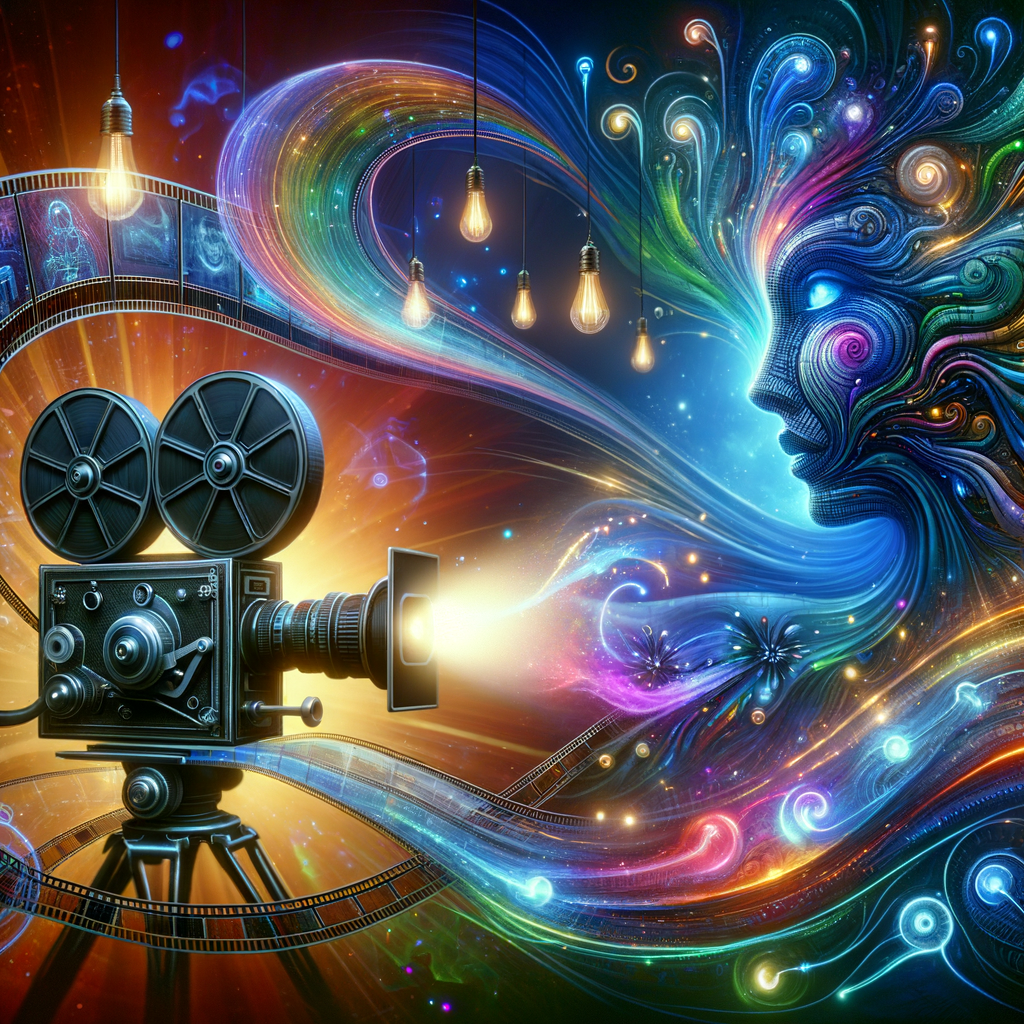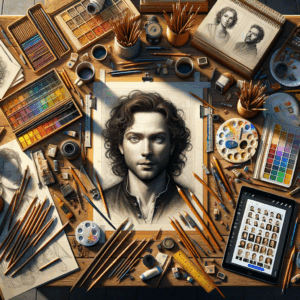
Cinematic AI Visuals: Stunning Prompts For Effortless Creativity
- Understanding Cinematic AI Visuals
- The Magic of AI in Visual Arts
- Stunning Prompts for AI Visuals
- Fantasy Landscapes
- Sci-Fi Eras
- Emotional Scenes
- Exploring Artistic Styles
- Impressionism
- Surrealism
- Minimalism
- The Benefits of Using AI for Visual Creativity
- Enhanced Efficiency
- Cost-Effectiveness
- Access to Unique Ideas
- Collaborating with AI
- Brainstorming Sessions
- Iterative Refinement
- Mutual Learning
- Challenges and Considerations
- Quality Control
- Ethical Implications
- Dependency Concerns
- Future of Cinematic AI Visuals
- Interactive Narratives
- Personalized Content Creation
- Global Collaboration
- Conclusion
- Frequently Asked Questions
- 1. What are cinematic AI visuals?
- 2. Can anyone use AI for visual creativity?
- 3. What are some popular AI tools for generating visuals?
- 4. How do I choose the right prompts?
- 5. Are AI-generated visuals copyright-free?
- 6. Can AI create animations?
- 7. How can I improve my AI-generated visuals?
- 8. What if I encounter low-quality outputs?
- 9. How does AI learn my preferences?
- 10. What future advancements can we expect for AI in visual arts?
- References
Understanding Cinematic AI Visuals
Cinematic AI visuals stand at the crossroads of technology and art. They merge the power of artificial intelligence with creative storytelling. Imagine the potential: complex narratives and stunning visuals, all enhanced by machine learning. This synergy allows artists, filmmakers, and marketers to venture into uncharted territories of creativity.
The term “cinematic” often conjures images of sweeping landscapes, captivating character arcs, and heart-pounding action. With AI, you can now enhance these elements, creating visuals that resonate with audiences. The beauty of AI lies in its ability to generate stunning imagery almost instantaneously, providing artists with a robust tool for their creative arsenal.
This new wave of creativity transforms how we approach visual storytelling. Whether you’re a filmmaker looking to create a breathtaking scene or a marketer aiming to draw attention to your brand, AI offers endless possibilities. In this article, we’ll explore various prompts to spark your creativity, unveiling the beauty of cinematic AI visuals.
The Magic of AI in Visual Arts
AI doesn’t just replicate what exists; it offers a new lens through which we can view our world. The technology behind AI can analyze vast datasets, recognizing patterns that humans might overlook. As a result, it can generate visuals that are not only aesthetically pleasing but also emotionally impactful.
To harness the magic of AI, we should understand how it can enhance our creative processes. The most notable tool in this arena is Generative Adversarial Networks, or GANs. This technology creates images that can appear strikingly realistic. The two networks – the generator and the discriminator – work in tandem, with one creating visuals and the other critiquing their quality. This process ensures that the generated visuals continuously improve.
Not to mention, AI doesn’t tire or lose inspiration. It can produce an endless stream of ideas, freeing artists from creative blocks. When you pair this technology with your unique perspective, the results can be breathtaking. Let’s look at some stunning prompts that harness the power of AI for creative endeavors.
Stunning Prompts for AI Visuals
Now that we’ve established the foundation, let’s jump into prompts that can invoke stunning visuals through AI. These prompts cater to different genres, styles, and moods, ensuring a wide range of creative possibilities.
Fantasy Landscapes
1. “A mystical forest with bioluminescent plants.”
– This prompt evokes the wonder of nature blended with magical elements. AI can create vibrant colors and intricate details that bring the forest to life.
2. “A floating castle above the clouds during sunset.”
– The combination of fantasy and a breathtaking sky allows AI to generate pastel colors and dreamy atmospheres, making your visual storytelling truly enchanting.
Sci-Fi Eras
1. “A futuristic cityscape with flying cars at night.”
– This image sparks excitement. AI can create a glowing city filled with vibrant neon lights, capturing the essence of a high-tech future.
2. “An alien planet with multiple moons and unusual terrain.”
– Think of this prompt as a canvas where AI can unleash its creativity. The result? An otherworldly landscape that challenges our imagination.
Emotional Scenes
1. “A young girl looking out of the window during a rainstorm.”
– This prompt invites introspection. AI can generate soft, muted colors that convey a sense of longing and nostalgia.
2. “A couple sharing a brief moment in a crowded city.”
– Here, the focus is on intimacy amidst chaos. AI can capture the delicate balance between connection and disconnection in an urban setting.
Exploring Artistic Styles
In addition to prompts, incorporating various artistic styles can take your AI-generated visuals to the next level. Here are some styles to consider:
Impressionism
Impressionism focuses on light and color rather than precise details. When you use a prompt like “sunset over the ocean in an impressionistic style,” AI can create visuals that evoke feelings over realism. Expect soft brush strokes and vibrant color palettes.
Surrealism
Surrealism dives into the absurd and dream-like realms. A prompt such as “a clock melting over a tree” can lead AI to produce bizarre yet fascinating imagery. The results often challenge our perceptions of reality.
Minimalism
Minimalism strips away unnecessary elements, emphasizing simplicity. A prompt like “a single leaf on a white background” teaches AI to focus on the essence of the subject, leading to clean and striking visuals.
The Benefits of Using AI for Visual Creativity
Utilizing AI in creative processes offers numerous benefits. Let’s explore some of these advantages.
Enhanced Efficiency
AI allows you to produce visuals in a fraction of the time it would take manually. This advantage is particularly useful for filmmakers and designers working under tight deadlines. With AI, you can quickly generate concepts, allowing more time for refinement and execution.
Cost-Effectiveness
Creating high-quality visuals typically requires significant resources. By leveraging AI, you can reduce both time and financial investment. Consequently, businesses and independent creators alike can access high-end visuals without breaking the bank.
Access to Unique Ideas
Machine learning algorithms can analyze and synthesize data in ways humans cannot. This capability gives you access to fresh ideas and perspectives that can redefine your creative direction. You can merge styles and genres in unexpected ways, enhancing your original vision.
Collaborating with AI
Using AI for visuals doesn’t mean that creativity is sidelined. Rather, it transforms the creative process into a collaborative effort. When you treat AI as a partner rather than a tool, the creative possibilities expand.
Brainstorming Sessions
Consider brainstorming with AI as co-creators. Start with a prompt and let AI generate options for you. After reviewing the AI-generated visuals, you can refine them further. This process can lead to unexpected gems that might not have surfaced through traditional brainstorming alone.
Iterative Refinement
AI excels at generating multiple versions of a visual based on your feedback. You can select a base image and then instruct the AI on what to enhance or modify. This iterative approach allows for meticulous refinement, culminating in a visual that aligns with your vision.
Mutual Learning
Working with AI is a learning process. As you provide feedback, the AI learns your preferences, making it a more effective collaborator over time. The more you work together, the better the outcomes can potentially be.
Challenges and Considerations
While AI offers incredible opportunities, it also brings forth challenges. Understanding these challenges ensures a smoother creative journey.
Quality Control
Not every AI-generated visual will meet your expectations. AI can sometimes produce oddities or inaccuracies. Always review and select the best outputs. You might have to adjust certain elements to align with your vision.
Ethical Implications
The rise of AI poses ethical questions regarding originality and ownership. If AI creates a piece of work, who owns the final product? It’s crucial to navigate these waters carefully, ensuring that credit is given where it’s due.
Dependency Concerns
Relying too heavily on AI can lead to a creative slowdown. While it’s beneficial, maintaining your artistic intuition and skills is essential. Use AI as a tool, not a crutch.
Future of Cinematic AI Visuals
The future looks promising for cinematic AI visuals. As technology evolves, we can anticipate more advanced AI models that generate increasingly realistic and directed visuals. Emerging technologies like augmented reality (AR) and virtual reality (VR) will further broaden the scope of possibilities.
Interactive Narratives
Imagine engaging with an interactive film where AI tailors visuals based on your choices. This dynamic storytelling approach might elevate viewer experiences, allowing them to immerse themselves deeper into narratives.
Personalized Content Creation
AI can analyze viewer preferences, creating tailored visuals that resonate on a personal level. This technology can enhance marketing strategies and audience engagements by delivering content that matches individual tastes.
Global Collaboration
Cinematic AI visuals enable collaborative efforts between creators worldwide. Thanks to cloud-based AI tools, artists can share prompts and visuals, enriching each other’s work with diverse cultural influences and techniques.
Conclusion
Cinematic AI visuals are reinventing how we approach creativity. From stunning prompts to varied artistic styles, the technology offers endless opportunities. Whether you’re a creator or simply an art enthusiast, harnessing AI can significantly enhance your creative processes.
By understanding both the benefits and challenges of AI in visual arts, you can create stunning results that resonate with your audience. Embrace the ongoing evolution of digital creativity. Discover beautiful imagery that sparks emotion and leaves a lasting impact.
Frequently Asked Questions
1. What are cinematic AI visuals?
Cinematic AI visuals integrate artificial intelligence with visual storytelling, allowing creators to generate stunning images quickly and efficiently.
2. Can anyone use AI for visual creativity?
Yes, many tools are user-friendly, making them accessible to everyone, regardless of artistic background.
3. What are some popular AI tools for generating visuals?
Popular tools include DALL-E, Midjourney, Artbreeder, and Runway ML. Each offers distinct features for visual creation.
4. How do I choose the right prompts?
Consider your creative goals and the emotions you want to evoke. Staying specific helps guide AI to produce better results.
5. Are AI-generated visuals copyright-free?
Copyright laws vary by region. Generally, you may need to credit the AI model or tool used. Always check the licensing terms of the specific tool.
6. Can AI create animations?
While AI primarily generates static images, other technologies are emerging for short animations, often depending on the complexity of the project.
7. How can I improve my AI-generated visuals?
Provide detailed feedback to the AI, refining generated outputs through iterative edits. Experiment with varying prompts to discover new creative directions.
8. What if I encounter low-quality outputs?
Quality can vary. Review multiple outputs and always select the most appropriate visuals. You may need to make manual adjustments.
9. How does AI learn my preferences?
AI algorithms analyze your feedback and choices over time, adapting to your style and preferences, which enhances the collaborative process.
10. What future advancements can we expect for AI in visual arts?
You can anticipate more sophisticated algorithms, interactive storytelling capabilities, and personalized content that enhances audience engagement.
References
– AI Art: A New Frontier
– Generative Adversarial Networks Explained
– The Rise of AI in Visual Arts

